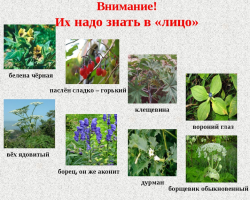Term "Microseneous" Only recently he entered into use among enthusiasts of a healthy lifestyle and gardeners, so not everyone understands what it is. Is this just a fashionable hobby or a new format of the garden?
Read on our website another article on the topic: "Growing greenery in the apartment on the windowsill all year round: Instructions". You will learn how to grow on a windowsill in the apartment onion, a croak, leaf salad, parsley, dill, basil, rosemary, garlic, ginger, mint and lemon balm, sorrel and spinach, oregano, cilantro, thyme.
From this article you will learn how the microwave differs from ordinary greenery, and what is its benefit. Read further.
Content
- What is a microwave: what is its benefit, does ordinary greens and vegetables replaces?
- What is the difference between microwave seeds from ordinary, simple seeds and do they differ: what seeds are grown from a microwave?
- What is the difference between the usual greens and microwaves?
- How does the microwave differ from the seedlings?
- Video: What is grown as a microwave? What kind of greens are poisonous
- Video: Interesting facts, 5th-you are puzzled! | Microseneous - benefits and harm.
- Video: destroy myths about microwaves
What is a microwave: what is its benefit, does ordinary greens and vegetables replaces?

Microsemen is young processes sprouted from plant crops. The shoots that appear should be cut within two weeks after planting. Young seedlings are considered richer nutrients, since the culture has not yet managed to grow and develop.
To obtain a microwave, you can grow such crops:
- Peas
- Radish
- Beet
- Rugula
- Cabbage
- Sunflower
- Basil
There can be such green plants such as onions, dill, parsleyand cins.
It is worth knowing: The shoots of some crops, such as potatoes, tomatoes and pepper, contain solanine harmful to health, they should not be grown and put in food or consumed independently.
What is the benefit?
- The microwave contains a large number of vitamins C, E, K. Their concentration is five times more than in adult cultures.
- Young processes are rich in antioxidants, which, with constant use, prolong life, add youth and restore neural connections in the brain, improving memory.
- Runches also have a large supply of useful fiber.
- There are minerals in the microwave. An analysis of the mineral composition of 30 types of crucifixions showed that such sprouts are a good source of potassium, phosphorus, calcium, iron and zinc.
Does ordinary greens and vegetables replaces?
- No, it does not replace.
- Although sprouted seeds contain more vitamins than adult crops, they cannot completely replace all vegetable plants. They are not intended for this.
Why exactly? Here's an explanation:
- There are easier vegetables. For example, 100 gr. Cabbage is a small piece that can be part of a dish and calmly fit in the mouth. And 100 grams of microwaves is one large bowl. Eating it will not be so simple.
- Snoes are more expensive than vegetables. On average, a box of shoots of peas costs 150 rubles, and a whole kilogram of parsley is 160 rubles.
- Diversity. For a healthy diet, this is important. The Ministry of Health advises there are different vegetables and fruits to receive the necessary vitamins. Having hung up on a microwave, you can lose a balance and variety.
However, it is not worth considering the sprouts completely useless. Salads are prepared from them, neck are knocked down, they decorate various dishes. In addition to fruits and vegetables, a microsene can be an excellent addition in obtaining vitamins, minerals and fiber, if you dilute the usual diet.
What is the difference between microwave seeds from ordinary, simple seeds and do they differ: what seeds are grown from a microwave?

Microsard seeds are no different from ordinary, simple seeds. Almost any seeds are suitable for growing microsenens. Although there are nuances.
- For example, many seeds in packages are treated with various chemicals. Such "sowing" are not suitable for landing.
- A lot of seeds are spent on the sowing of microsenens, so it is sometimes unprofitable to use standard bags.
The most optimal solution would be to take a ready -made set of seeds for planting a microwave. It is a little more expensive than usual, but it contains varieties of seeds that are definitely suitable for growing microsenerations. Such "sowing" do not contain chemistry and in a bag they will be in sufficient quantities for sowing. A similar approach saves time and effort, and also gives a guarantee for the result.
What seeds are a microwave grown from?Here's a list:
- All types of salads
- Spicy herbs - basil, coriander, mustard
- Sunflower
- Corn
- Peas, lentils, chickpeas and other legumes (except beans)
- Radishes, radish
- Carrots and beets
- All types of cereals
- Cabbage, including broccoli, red and leaf
- Onion
You can grow literally any edible plant.
What is the difference between the usual greens and microwaves?
For mature plants of ordinary greenery, the amount of valuable nutrients largely depends on the quality of the soil, fertilizer, care and many other external conditions. Weeds, poor conditions, various diseases and garden pests can have a negative effect. The microwave has a very short life and does not have time to get sick. The conditions for germination of seeds are very simple and do not require fertilizers or chemicals. This is the main differences in the process of growing. Enough ordinary lighting and heat, as well as regular watering.
In appearance, microwaves are young sprouts, delicate in taste, fragile and healthy. In ordinary greenery, the stems are thick, the taste is more saturated.
How does the microwave differ from the seedlings?
The main difference between the seedlings and microsenens is that the former are in water for no more than three days. They let the spine, but do not begin to develop leaves. They are eaten whole. And the microwave, as mentioned above, grows in the soil from one to two weeks. Only the stem and leaves are edible in it.
This is what the prophet looks like:

This is what a microwave looks like:

Microseneous is a very tasty and healthy dish. Relatively recently, it appeared in the vocabulary of many gardeners, but has already managed to gain its popularity. It will definitely appreciate adherents of a healthy lifestyle, as well as lovers of summer experiments.
Video: What is grown as a microwave? What kind of greens are poisonous
Video: Interesting facts, 5th-you are puzzled! | Microseneous - benefits and harm.
Video: destroy myths about microwaves
Read on the topic:







